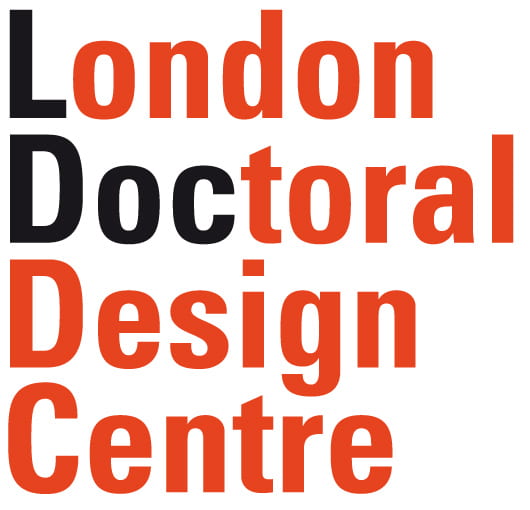Written by LDoc student Victoria Geaney, who was awarded LDoc Student Development Funds to enable her to attend the Quite Frankly: It’s a Monster Conference in Australia in October 2018
Quite Frankly: It’s A Monster Conference was organised by SymbioticA and held at the University of Western Australia, from 17th-19th October, to mark and celebrate 200 years since Mary Shelley’s Frankenstein was first published. The conference took the theme of life as a material and speakers and delegates were interdisciplinary, incorporating artists and designers working with biology, synthetic biologists, social scientists, scientists, humanities, philosophy and literary scholars. Keynote speakers included regenerative surgeon Fiona Wood, philosopher Karen Barad and performance artist Kira O’Reilly.
SymbioticA and Meetings with Ionat Zurr and Oron Catts
I visited artist Ionat Zurr at the SymbioticA space, and she took me on a tour around the SymbioticA laboratory, and into many different laboratories at the University of Western Australia. She showed me the equipment in SymbioticA’s laboratory, and introduced me to areas with time-based and 3D scanners for cells, a laboratory for dyeing cells (very similar to textile dyeing though an ageing process in science), and we went to the biological laboratory where they use real cadavers in order to teach the students about the bodies. Ionat introduced me to artists and scientists and those working in-between the two disciplines.
Prior to the conference, I met with Oron Catts at SymbioticA, along with social scientists Dr Rob Smith and Jane Calvert from Edinburgh university. We had a meeting, then lunch together and Oron took us on a tour of SymbioticA and the laboratories, showing us artworks produced by residents of the SymbioticA laboratory.
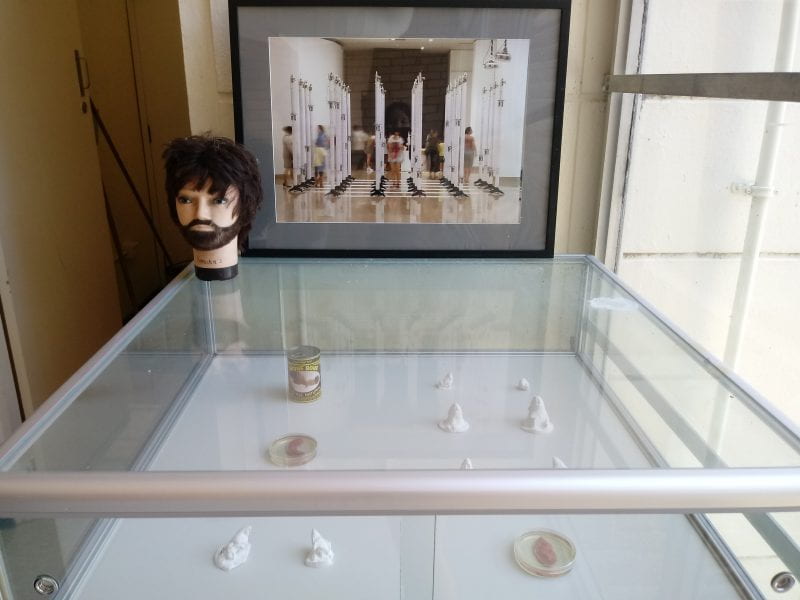
SymbioticA laboratory artworks
Quite Frankly: It’s A Monster Conference
The conference was opened with a beautiful welcome to the country by Gail Wynne, an Aboriginal Elder who spoke about the land and Whadjuk Country – which is really important in aboriginal culture and wider Australian culture. The organisers spoke briefly, to welcome everyone, and regenerative surgeon Fiona Wood gave a fantastic keynote on the beauty of regenerative surgery, on her thoughts and her future hopes and dreams for the discipline and about healing scars and wounds in relation to stitching and skin, which was fascinating.
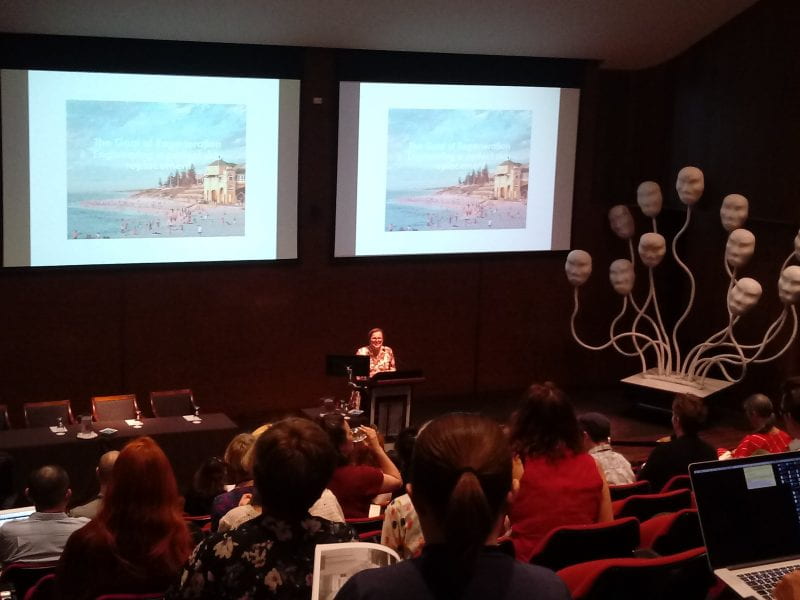
Keynote speaker Fiona Woods (regenerative surgery)
The sessions were split into streams, so I firstly attended the Monstrous Ecologies Queer/Urban Ecologies session, where the talks touched upon new materialism, a lot on the Anthropocene, hyperobjects, microplastics, queer ecology and agency.
My Paper at the Conference
My session was chaired by Orkan Telhan, and other speakers included Jane Calvert, Sascha Pohflepp and Larissa Pschetz. My paper fitted well into the panel, which centred on biological design, with artist Sascha Pohflepp (who studied Design Interactions at the Royal College of Art), Larissa Pschetz (teaches biological design in Edinburgh), and science and technology studies (STS) researchers from Edinburgh including Jane Calvert – who was heavily involved in Alexandra Daisy Ginsberg’s ‘Synthetic Aesthetics’ project, and has written about interactions between artists, designers and scientists. The session appealed to textile practitioners, who attended and spoke to me afterwards – including Donna Franklin and Dr Lynn Mowson.
Karen Barad Keynote
I attended the keynote by Karen Barad titled: What Flashes Up: Political Possibilities of Monstrous Couplings, Dis/continuous “Trans”formations, and Perverse Wanderings/Wonderings Or Virtuality & Nature’s Optical Unconscious. I was struck by their poetic use of language, how they blend Quantum physics and Quantum Field theory, whilst forwarding ideas of agential realism and new materialism. They spoke about Franken-tadpoles: Tufts University grew engineered tadpoles with extra limbs and body parts; and the electric face, where the pattern for a face appeared as a flash on a tadpole embryo, and was captured on camera. They also spoke about concepts within physics and related them to elements such as lightning.
The talks which stood out to me included: the “This Mess We’re In” artist discussion was led by Tarsh Bates, with themes of collaboration, queerness, relationality, revealing the process and political engagements with life and the ‘more than human’ world. Also, the Poetic Franken-Styles talk using machine learning tools and combining these with human interventions and curation in order to create new methods of human-nonhuman-machine algorithms and poetry. Artist Stelarc’s talk was interesting in his ideas and performative uses of the human body and Vladimir Todorovic showed his innovative digital artwork entitled ‘The Running Nude’. Ippolit Markelov spoke about VI and his work MetabolA.I., theory including Donna Harraway and the ethics of working with humans-nonhumans, in relation to machine learning. Paul Thomas’ artist’s talk on his work as a quantum artist was also fascinating.
I attended the Crossing Kingdoms plenary panel session with STS researchers Rob Smith, Erika Szymanski and Jane Calvert, synthetic biologists Susan Rosser and Elise Cachat, and artists Ionat Zurr and Oron Catts. They spoke about their collaborative yeast project combining or fusing mammalian cells into yeast cells, on scientists and artists spending time in each other’s spaces (art studios and laboratories), exploring and asking questions rather than finding answers, and that having a problem is a good way to encourage collaborations. Also, not being afraid of the frictions, and the effects of these creative collaboration on scientists – Susan explained that the collaboration enabled her to think about her scientific practice in a wider way.
Exhibitions
During the evenings and over the weekend, there were many exhibitions and events running as part of the conference. I attended the Unfettered exhibition at the Cullity Gallery, This Mess We’re In and It Is A Long Time Since This Moment exhibition at Old Customs House, the PICA gallery in central Perth for the opening of Oron’s exhibition HyperPrometheus, the Biomess exhibition at the AGWA, and Dark Skies Ahead exhibition at the Paper Mountain gallery. The exhibitions allowed great opportunities for networking with the other delegates and talking to the presenters and keynote speakers.
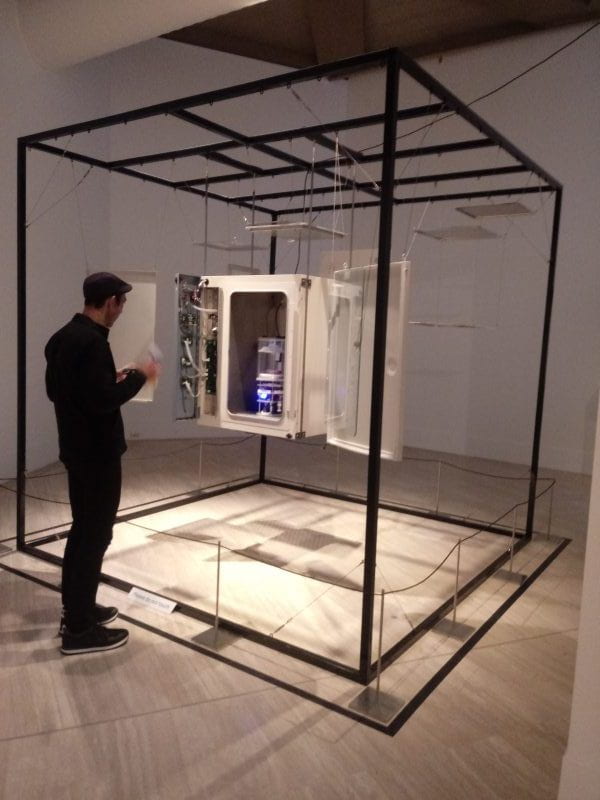
Biomess exhibition at the AGWA
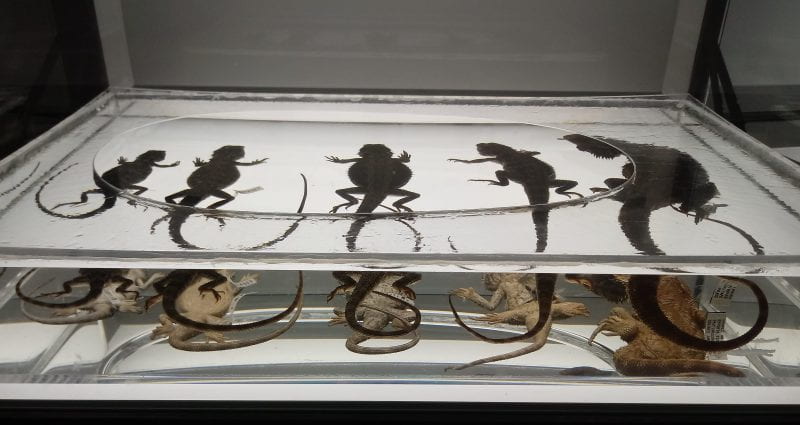
Biomess exhibition at the AGWA
Meeting with Donna Franklin
Donna Franklin is one of the early pioneers who worked with bacterial cellulose and she used wine in order to grow and culture the layers of cellulose, in collaboration with Gary Cass. Donna produced dresses made from the biomaterial, which have been exhibited internationally and garnered a lot of publicity and press. Donna was really friendly and fascinating to speak to, and we spoke about the PhD process, about my work and she gave great advice about linking together elements of theory and practice via the use of diagrams.
Overall
It was an incredible opportunity to give a paper at the conference, to be amongst such exciting delegates and speakers, to visit the SymbioticA laboratory and meet with Oron Catts, Ionat Zurr and Donna Franklin. The conference centred on practitioners working with biological and physical living systems whether mammalian, bacterial, ecological, biotechnological, or working with AI or within synthetic biology. Key themes of the conference included: agency, anthropocene, queer theory and ecologies, body, ontology, entanglement, new materialism, Actor-Network theory, Object Oriented Ontology, human-nonhuman/ human-machine /’more than human’ interactions, co-authors/co-agents, chimeras/semi-livings, and ‘yeastophilia’. Attending the conference has made me more confident in how such theories fit into the space of biological art and design, and I am feeling stronger about the location of my project in relation to the ideas and speakers from the conference, exhibitions and body-fabric-bacterial relations.
